Ancient Chinese porcelain vase type
Time of issue: 2023-12-24 12:23:23- 1. Pointed bottom vase
- 2. Chuanping
- 3. Gourd vase
- 4. Polygonal vase
- 5. Pan-mouth vase
- 6. Purification vase
- 7. Jade Huchun vase
- 8. Plum vase
- 9. Guaner vase
- 10. Xianwen vase:
- 11. Multi-tube vase
- 12. Wash-mouth vase
- 13. Cong-style vase
- 14. Garlic vase
- 15. Melon-edge vase
- 16. Flower mouth vase
- 17. Refuge vase
- 18. Pankou flask
- 19. Drumstick vase
- 20. Fengshou vase
- 21. Vase with base
- 22. Flat-belly gourd vase with ribbon
- 23. Heavenly Ball Vase:
- 24. Square Japanese horn vase
- 25. Wall vase:
- 26. Movable ring vase
- 27. Bile type vase
- 28. Hexagonal vase
- 29. Olive vase
- 30. Water chestnut flat vase
- 31. Hammer vase
- 32. Paper mallet vase
- 33. Chrysanthemum petal vase
- 34. Willow leaf vase
- 35. Guanyin vase
- 36. Lantern vase
- 37. Tibetan grass vase
- 38. Appreciation of vases
- 39. Jiaotai vase
- 40. Turn-center vase
- 41. Double vase
Many modern vase types are transformed from ancient vase types. Understanding ancient vase types can better understand the origin of current vase types.
Vase have played a major role in Chinese porcelain since ancient times. In the early days, vase were mainly drinking vessels, and later they became storage vessels and ornamental vessels. Now I will give an introduction to various types of vases. The text content of the introduction is mostly based on netizen articles. The accompanying pictures are chosen by me. Most of the accompanying pictures are from museum collections. Please correct me if there are any mistakes.
1. Pointed bottom vase
Neolithic pottery, one of the most representative artifacts of the Banpo type of Yangshao Culture, water-drawing vessel, red pottery, handmade. The shape of the vessel is a small straight mouth, a thin neck, a long round belly, a pointed bottom, shoulders or belly. There are symmetrical double ties for threading ropes. The surface of the vessel has many rope patterns, a good degree of sintering, and a solid texture. When drawing water, due to the effect of gravity, the mouth of the vase will naturally move downward. When the water is almost full, the vase body will automatically turn upside down with the mouth upward. The Yangshao Culture Miaodigou type and the sharp-bottomed vases found in the Majiayao Culture relics are slightly different. The pointed-bottomed vases of the Miaodigou type have double lips and a small mouth. The body is long and thin, and the shoulders and abdomen are not tied. The pointed and low vases of the Majiayao culture have extravagant mouths, straight necks, folded shoulders, and double lines on the belly. They are made of fine mud and orange-yellow pottery. The surface of the vessel is coated with light red pottery and painted with black swirl patterns. The decoration is full of dynamic and finely crafted. .

In ancient times, there were many vases, basins, and urns with pointed bottoms or cones. In addition to the convenience of taking water from the pointed-bottomed vases mentioned above, I think these utensils are conducive to heating. For example, this shape can easily insert the ash after burning. middle. This is also the reason why most of the lower parts of these utensils have no decorations. For a certain period of time, this phenomenon even became a style, common in ancient ceramics before the Song Dynasty.
2. Chuanping
A popular utensil shape in the Sui and Tang Dynasties, that is, a double-shaped vessel with a single mouth and two bellies connected in parallel. It is inscribed with the name "Zhuanping". Currently, only two pieces have been found, which are collected in the Tianjin Art Museum and the Chinese History Museum. It was unearthed from the tomb of Li Jingxun in the fourth year of Daye of the Sui Dynasty (608) in the suburbs of Xi'an. The shape of this type of vase is mainly suitable for special occasions, such as sacrifices, etc. It is basically an artistic act.

3. Gourd vase
A vase shaped like a gourd. Since the Tang Dynasty, it has been loved by the people because of its homophonic pronunciation of "Fulu", and has become a traditional utensil shape. During the Jiajing period of the Ming Dynasty, because the emperor favored the teachings of Huang and Lao, this utensil became particularly popular and underwent many changes. In addition to the traditional utensil shape, it also had an upper-round-bottom shape, which implies the meaning of a round sky and a round earth. By the time of Emperor Kangxi of the Qing Dynasty, it had become one of the varieties of porcelain for export. The shape of the vessel was taller than that of the Ming Dynasty, and three-section or four-section gourd vases appeared. After Yongzheng, the one-hole gourd vase was created, which subsequently changed in many ways. Among them, the mouth of the vase is restrained, the foot is lying, and the one decorated with symmetrical Ruyi ribbons and ears evolved into the "Ruyi Zun".

4. Polygonal vase
A popular shape from the Tang Dynasty to the Five Dynasties, which evolved from the ancient warehouse jars of the Three Kingdoms and Jin Dynasties. The shape is a multi-tower body with small upper and lower large arc steps. Each level is decorated with multiple vertical or diagonal conical corners. In the local dialect of Wu, the pronunciations of "jiao" and "gu" are close, so "duojiao" also means "multiple grains". Folks in Jiangsu and Zhejiang take it as the auspicious meaning of "abundance of grains".
There are many shapes of barn-type utensils, and most of the production kilns are Yue kilns. In ancient times, ghosts and gods were worshiped in the south of the Yangtze River.

5. Pan-mouth vase
One of the vase types. It got its name because the mouth of the vase looks like a shallow plate. Popular in the Tang and Song Dynasties. The shape is beautiful but difficult to make.

6. Purification vase
One of the "Eighteen Things" for Buddhist monks. It can be carried with you when traveling to store water or purify your hands. He originated from India, the Buddhist country, and later spread to China, Japan, Korea and the Southeast Asian Islands with Buddhism. The Sanskrit pronunciation is "Tuan Yajia", "Junchi", "Junchi", and the Chinese translation is "vase" or "bath vase". Porcelain pure vases were popular in the Tang, Song and Liao dynasties. The vase is shaped like an elongated tubular vase, with the middle part of the neck protruding like a disk, a long round belly, a circle foot, and a short stream with upturned shoulders, mostly in the shape of an auspicious animal's head. After the Yuan and Ming Dynasties, it was often called "Junzhi". The body of the vessel is mostly oblate, the neck is short, and the fluid is plump. After entering the Qing Dynasty, the shape of this vessel was monopolized by the royal family. It evolved into a straight neck, plump shoulders, tucked-in belly, and high-circled feet that were spread out like a lid and flow-free. It became a thing given to senior Tibetan monks by the Qing court to plant grass and offer it to the Buddha. Therefore, it was renamed "Tibetan grass pot".
Although the shape of the pot appeared early, the concept and function limited to the pot appeared relatively late. In particular, hand-held teapots only became popular in the Ming Dynasty.

7. Jade Huchun vase
a type of vase created during the Northern Song Dynasty. It has a curved mouth, a thin neck, a hanging belly, and circled feet. It is named after the phrase "jade pot precedes spring" in a Song Dynasty poem. In the Song Dynasty, it was mainly fired at the kilns in the north. After the Yuan Dynasty, its shape spread to all the kilns in the south and north, and octagonal shapes and carving decorations appeared on the body. During the Ming and Qing dynasties, the vessels were generally shorter and thicker than those of the Song and Yuan Dynasties, and became the traditional vessel shape that lasted until the end of the Qing Dynasty.

8. Plum vase
a type of vase created in the Northern Song Dynasty. It is named after its small mouth, which can only accommodate plum branches. Also known as "Jing Vase". The shape is a small mouth, short neck, plump shoulders, narrow abdomen, and slender vase body. Cizhou kiln vessels have inscriptions such as "Clean Wine" and "Drunk Hometown Wine Sea" written in black inscriptions on them, indicating that they are wine utensils; however, the murals in Liao tombs show that they were used for flower arrangements, indicating that they were also furnishings. Song ware generally has a mushroom-shaped mouth and a slender and beautiful body. In the Yuan Dynasty, the vessel had a flat mouth, a short neck that was thin at the top and thick at the bottom, and a majestic shape. After the Ming Dynasty, there were many lips, and the body of the vessel also varied slightly with the changes in the aesthetic taste of each dynasty.

9. Guaner vase
One of the vase styles, popular in the Song Dynasty. The shape of the vessel imitates the style of a pot in the Han Dynasty, with a longer diameter, an oblate belly, a circle foot, and symmetrical vertical tubular ears on both sides of the neck. It is often fired in Ge Kiln, Guan Kiln, Longquan Kiln, etc. There were also imitations in the Qing Dynasty.
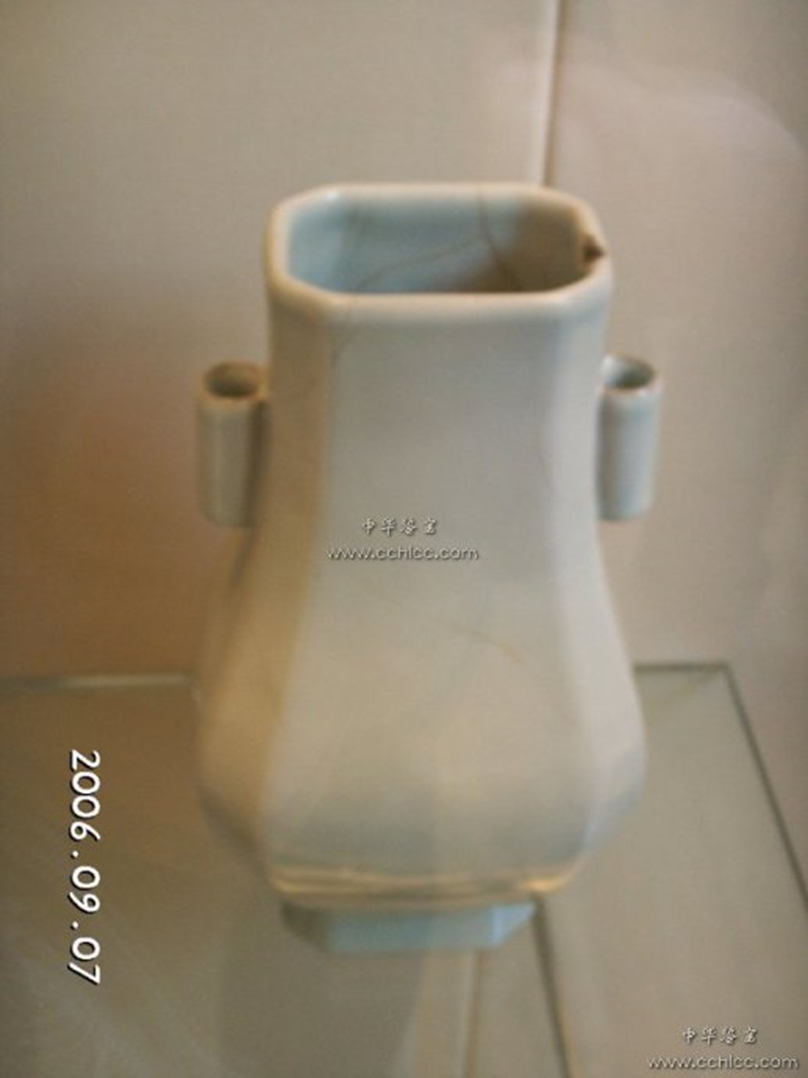
10. Xianwen vase:
also known as Qixian vase, one of the vase types. It is named after the convex string patterns surrounding the vase. In the Song Dynasty, Ding kiln, Guan kiln, Ge kiln, Longquan kiln, etc. were often fired.

11. Multi-tube vase
also known as horn jar and dark vessel. A type of vase (can) popular in the Song Dynasty. It is named after the upright polygonal or circular tubes distributed on all sides of the shoulder of the vase. The vase has a straight mouth with a flower button cap. The vase body has a round tube type and a multi-stage tower type. There are five tubes and six tubes. The tubes are hollow and most of them are not connected to the vase. The Longquan kiln fired a larger quantity, and the Cizhou kiln also fired. Products made from Cizhou kiln in the north have a thicker vase body and six shorter and thicker tubes with upright shoulders. The underworld weapons are so weird.

12. Wash-mouth vase
One of the vase types, named because the vase mouth looks like a shallow wash. It was popular in the Song Dynasty and was fired in the Longquan kiln in greatest quantities. The mouth-washing vases fired in various kilns in the north and south can be summarized into two types: one is a mouth-washing vase with a straight neck, folded shoulders, a cylindrical belly, and a shallow ring foot; the other is a mouth-washing vase with a long neck and an oblate shape. Abdomen, circle feet. Such vases may have evolved from oil lamps.

13. Cong-style vase
A vase imitating the shape of a jade cong from the Neolithic Age. It has a round mouth, a short neck, a long square-cylindrical body, and a circle foot. The mouth and foot are similar in size. Some vessels are decorated with raised horizontal lines on all sides. The earliest porcelain Cong-style vases were seen in the Guan kilns and Longquan kilns of the Southern Song Dynasty. In the Ming Dynasty, Shiwan kilns often applied moon white glaze on such shapes. After the Qing Dynasty, the horizontal lines on the body evolved into Bagua patterns, so they were also called "Bagua" in the later period. vase". The vase below is clearly an early product.
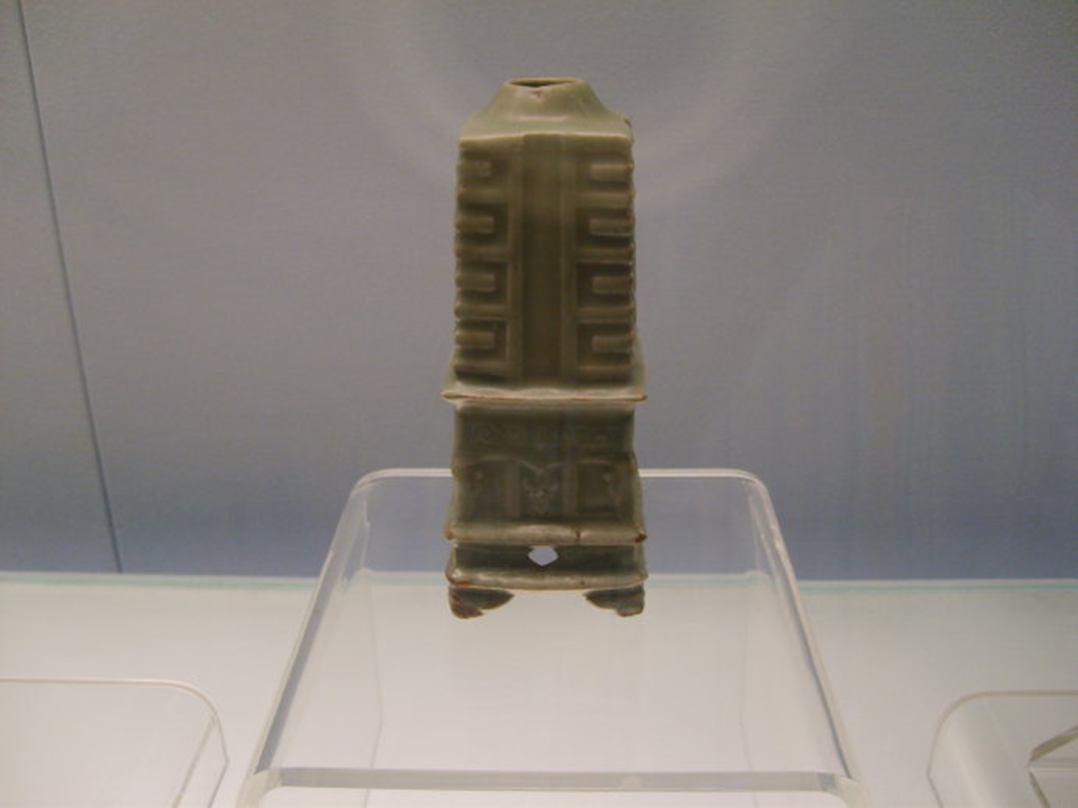
14. Garlic vase
One of the vase types. It imitates the shape of pottery from the Qin and Han Dynasties. It is named after the mouth of the vase is shaped like a garlic head. Porcelain garlic vases were first made in the Song Dynasty and became popular in the Ming Dynasty. In the Qing Dynasty, the basic shape was a garlic-shaped mouth, a long neck, a round belly, and a circle foot. During the Ming and Qing dynasties, the abdomen of the vase often changed, and the garlic-shaped mouth varied in size.

15. Melon-edge vase
one of the vase types. Popular in Song and Liao dynasties. The characteristic is that the belly of the vase is evenly distributed with longitudinal convex and concave arcs, dividing the vase body into melon prismatic shapes. Its shape is a curled mouth, a straight neck, a long round melon-shaped belly, and a rounded foot shaped like a petal. Jingdezhen has the most varieties and the most beautiful ones.

16. Flower mouth vase
One of the vase styles. It is named because the mouth of the vase looks like an open flower. Popular in the Song and Jin Dynasties, it was already fired in the Tang Dynasty. It is now collected in the Palace Museum, Beijing. The mouth of the vase is shaped like a lotus petal, with a thin neck, slippery shoulders, spherical belly, circle feet, and a human face-shaped handle at the mouth of the vase, which is connected to the shoulder. In the Song Dynasty, Jingdezhen, Cizhou, Yaozhou and other kilns all produced flower-mouth vases. The basic form is a flower mouth, a thin neck, a round belly, and a sloping foot. The difference between the flower-mouthed vases of the Song and Jin dynasties in the northern kilns lies in the changes in the feet. In the Song Dynasty, the feet were shorter, while in the Jin Dynasty, the height of the feet was almost equal to the neck of the vase.

17. Refuge vase
Commonly known as the soul vase and the underworld weapon. It is commonly found in tombs from the Song, Yuan and Ming dynasties in the Jiangnan area. The body of the vase is slender, with the sun, moon, clouds, dragon, tiger, turtle, snake, bird, rooster, dog, deer, horse, figures, etc. piled on the neck, and the lid button is in the shape of an upright bird. There are also people who call them Dragon and Tiger Vases and Sun and Moon Vases based on the main decorations on the vases. Compared with the Song Dynasty, the conversion vase of the Yuan Dynasty has a tall body and complicated decorations. Judging from the unearthed conditions of the refuge vases, most of them were used in pairs. A few vases had the inscriptions "East Cang" and "Xiku" on the necks, and the vases contained carbonized grains, indicating that the refuge vases were used as barns for burials of the dead. Some people also believe that it is the refuge of the souls of the dead, so it is called the refuge vase. This type of vase can actually be classified into the same category as the polygonal vase that appeared above.

18. Pankou flask
one of the typical vessels of the Liao Dynasty. The vessel has a shallow mouth, a long and slender neck, sloping shoulders, tucked-in belly, and outstretched feet. Some vessels have the word "官" marked on the bottom. The same kind of vessel with body decorations on the shoulders and belly that goes through the ears is called a "pankou piercing ear-back kettle"; a vessel with a gush on the shoulder side is called a "pankou long-necked kettle". Decoration methods include plain black pottery, calendered, white glaze, black glaze, brown glaze, yellow glaze, green glaze and other glaze colors or engraving. An improved variety of mouthwash vase.
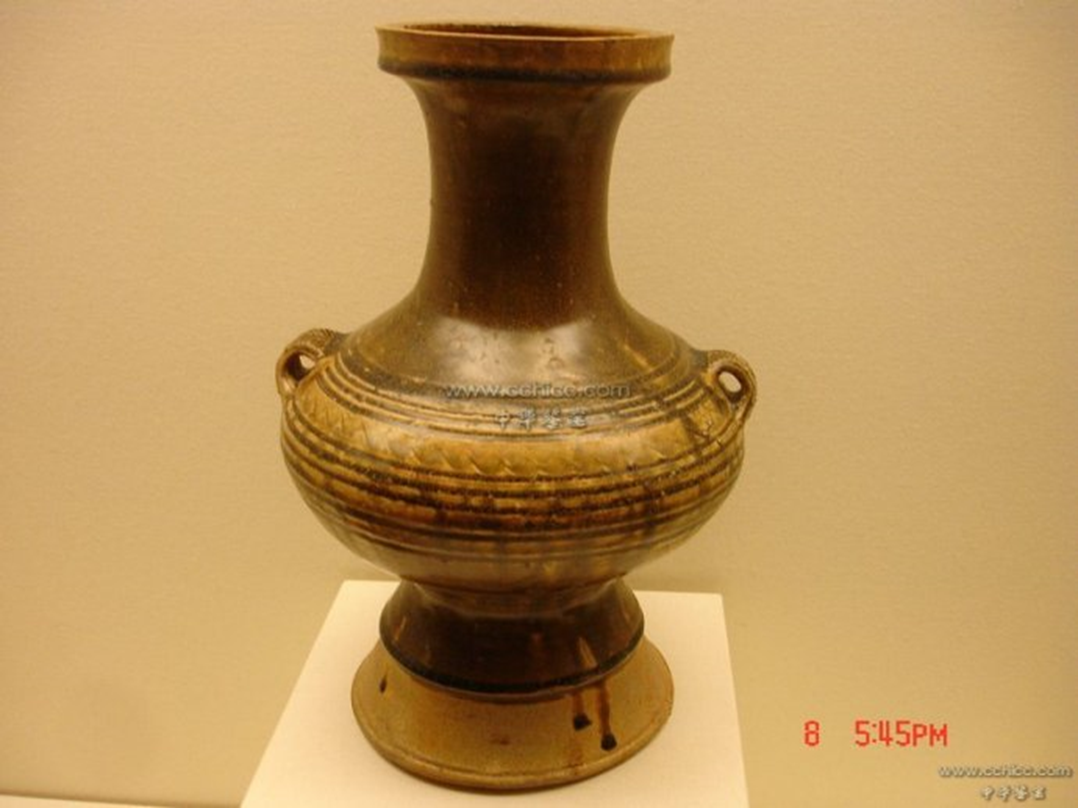
19. Drumstick vase
also known as drumstick altar, one of the typical ceramic vessels in the Liao and Jin dynasties. The mouth is rolled outward, the shoulders are slender, and the abdomen is slender and shaped like a chicken leg, hence the name. The thick ones are also called "elephant-leg vases". Most of them are decorated with dark brown glaze or tea powder glaze. Most of them are decorated with convex and concave string patterns from the shoulders to the bottom. A few of the shoulders are engraved with Chinese characters in regular script or Khitan inscriptions, such as "Tian in the second year of Qianlong", "Twenty-month in the third year of Qianlong". "One", "Zhai in the seventh year of Da'an", etc. Some have Khitan portraits carved on their abdomens. They are often unearthed in tombs of the Liao and Jin Dynasties in the northern region. In the murals of the Liao Dynasty, there are scenes of Khitan people carrying slender drumstick altars on their backs, indicating that such utensils were mostly used by nomadic peoples. This type of vase is developed from the ancient pointed bottom vase.

20. Fengshou vase
one of the vase styles of the Liao Dynasty. It is a unique shape created by the influence of Central Asian gold and silverware. The phoenix head has open eyes, a curved beak holding a bead, a lotus leaf-shaped flower mouth on the top of the head as the crown, a slender neck decorated with many string patterns, plump shoulders, a slender abdomen, flat bottom or outstretched false-circle feet. The body of the vessel is plain, carved or decorated with patterns. This vase-style concept should have originated in the Tang Dynasty.
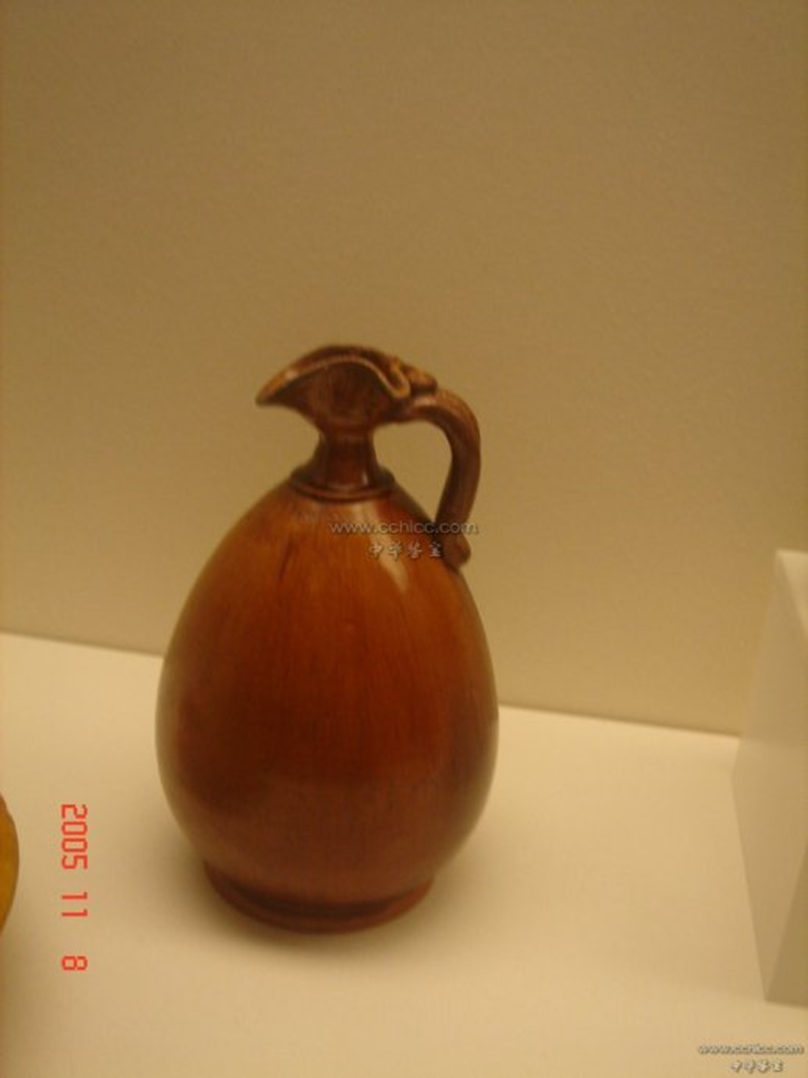
21. Vase with base
One of the vase types, named because the vase body and the base are connected into one body. Popular in the Yuan Dynasty. The Shufu glaze-mounted vase collected by the Guangdong Provincial Museum has a plate mouth, a thin neck, a hanging belly, tripod-style tripods, and a hexagonal hollow base. The Jun kiln double-seat amphorae unearthed at the Dadu site of the Yuan Dynasty in Beijing in 1972 has a petal-shaped mouth, a slender neck, plump shoulders, an inward lower abdomen, and a hollow base at the bottom of the vase. It can be called a masterpiece of double-seat vases.
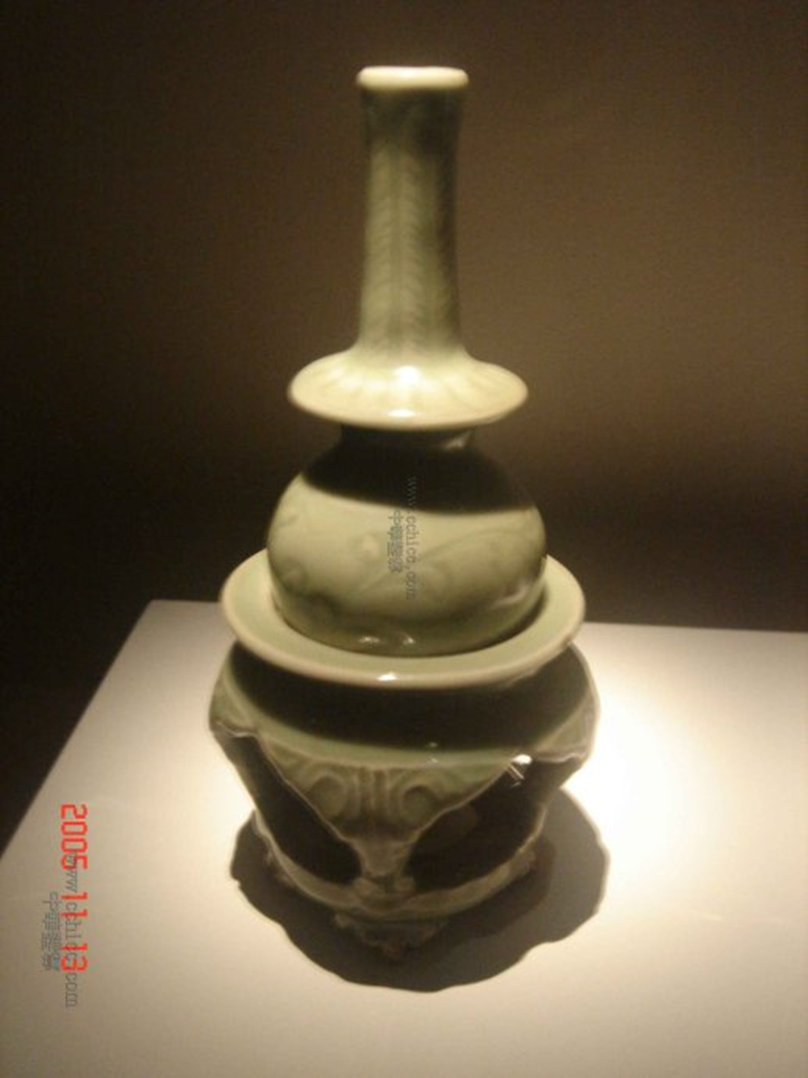
22. Flat-belly gourd vase with ribbon
a type of vase. The shape of the vessel is like a flat gourd with symmetrical double ties on the neck. Because the belly is round like a full moon, it is also called "Moon Holding Vase" or "Baoyue Vase". The shape of the ceramic vase is influenced by Western Asian culture. This style of vase was first seen in the Hongwu imperial kilns of the Ming Dynasty, and became popular in the Yongle and Xuande dynasties. It did not appear again until the end of the Ming Dynasty. There were imitations or slight changes in the official kilns of the Kangxi, Yongzheng and Qianlong dynasties in the Qing Dynasty, and they were renamed "horse hanging vases". They were utensils carried by the royal relatives when traveling on horseback.

23. Heavenly Ball Vase:
One of the vase styles, it is a vessel shape influenced by West Asian culture. The mouth is slightly wide, the neck is straight, the belly is bulbous, and the bottom is flat. It first appeared in the Yongle Dynasty of the Ming Dynasty. The Xuande utensils were slightly more extensive than those of the Yongle Dynasty. They did not appear in other dynasties in the Ming Dynasty after that. During the Kangxi Dynasty in the Qing Dynasty, the trend of imitating antiques was prevalent, and the celestial sphere vases were mostly imitated from the early Ming Dynasty. They were more popular during the Yongzheng and Qianlong reigns, and were often signed with the year of this dynasty.

24. Square Japanese horn vase
One of the vase styles, it is the mill shape created by the Jingdezhen Imperial Ware Factory during the Xuande period of the Ming Dynasty. The shape is a lip-like mouth with a slightly extravagant mouth, a straight neck with plastic animal ears on both sides, and each right angle of the square belly is beveled at 45 degrees, turning it into an eight-sided hammer shape, with the rounded feet turned outwards. Compared with the Xuande ware, the imitations from the Yongzheng imperial kiln factory in the Qing Dynasty have a larger vase body and are stamped with the Yongzheng official kiln mark. The Qianlong dynasty imitations have shorter feet and smaller animal ears. In the late Ming and early Qing dynasties, there were no imitations, some of which were almost as good as the real ones.

25. Wall vase:
A vase type specially designed for hanging on the wall or hanging in a sedan chair. It is also called "hanging vase" or "car vase". It first appeared in the Xuande Dynasty of the Ming Dynasty. The vases are all half-sectioned as a whole, with a flat and perforated back that can be hung with a rope. First hung in a birdcage. During the Wanli period, there was a great development, and there were many shapes such as lotus, gourd, melon edge, and bile type. In the Qing Dynasty, many of them were produced in the official kilns of Qianlong, with regular shapes, exquisite craftsmanship, rich varieties, and many poems with imperial inscriptions.

26. Movable ring vase
One of the vase types, named after the movable rings on the ears of the vase. Decorative living rings are a popular style since the Jiajing period of the Ming Dynasty. During the Jiajing period, the shape of the movable ring is that the lip edge is turned outward, the neck is tied, the belly is long and drooping, the feet are higher and turned outward, the bottom is flat, the neck is pasted with double animal ears, and there is a movable ring. This type of vase was fired during the Kangxi period of the Qing Dynasty and the Republic of China period.
27. Bile type vase
A type of vase. With a long neck, sloping shoulders and a hanging belly, it looks like a hanging animal gallbladder. The shape is similar to an Erlenmeyer flask, except that the neck is shorter and thicker. It first appeared in the Wanli Dynasty of the Ming Dynasty and became popular in the Qing Dynasty.

28. Hexagonal vase
Also called six-sided vase. One of the popular vase styles in the middle and late Ming Dynasty, it is named after the hexagonal prism shape of the vase body.
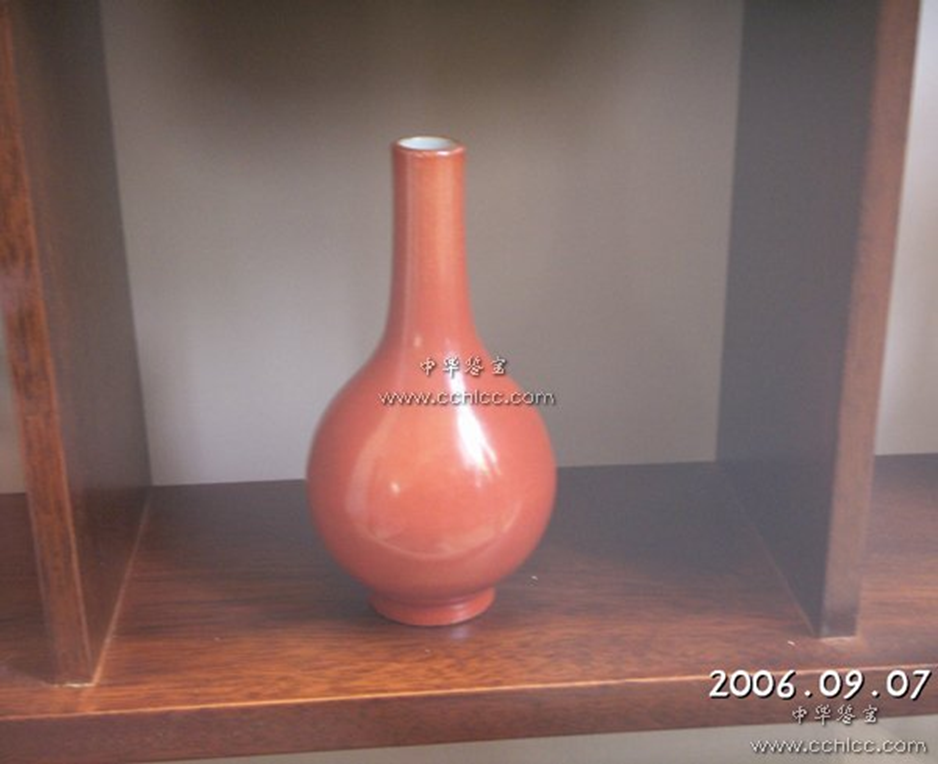
29. Olive vase
bulging belly, introverted mouth and feet, flat bottom or round feet, shaped like an olive. There are two types: plain body and melon edge style. It was a popular utensil shape in the Qing Dynasty. It was first created in the Shunzhi Dynasty and was most common during the Yongzheng and Qianlong reigns.
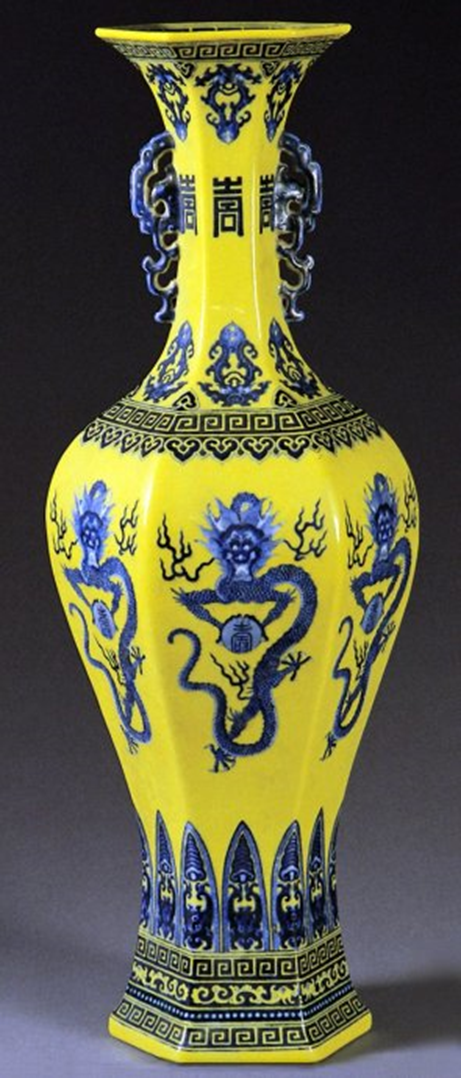
30. Water chestnut flat vase
A popular vase style in the Qing Dynasty. The straight neck is thicker, and can be divided into a curved mouth and a straight mouth. The belly of the vessel is flat and round, shaped like a water chestnut, with a circle foot. First created during the Kangxi period of the Qing Dynasty, most of them were straight neck. During the Tongzhi and Guangxu periods of the late Qing Dynasty, this style became popular in official kilns, but they all had a thick and short tapered neck, a water chestnut-shaped flat round belly, and a circle foot. The shape remained the same with little change.

31. Hammer vase
One of the vase types, it is named after the wooden mallet used for laundry in the old days. Most of them were burned by the people of Kangxi in the Qing Dynasty. Hammer vases are divided into round, square and soft vases. The round mallet, also known as the hard mallet, has a round mouth shape, a short straight neck, round folded shoulders, a long cylindrical belly, and a flat-cut two-story platform at the bottom. The shapes and sizes of the vessels vary, with the larger ones being as high as 70 centimeters and the smaller ones being less than 10 centimeters. The square mallet vase is also called a square vase. The shape of the vessel is a skimmed mouth, a short neck, flat shoulders, slightly folded, and a long square shape.
The abdomen is slightly wider at the top and narrower at the bottom, square and wide-footed, with a concave bottom glazed. The soft mallet vase specifically refers to a type of vessel fired in the early Yongzheng period. Compared with the hard mallet, the shape is not as tall and straight as the latter. The mouth of the device is extravagant, the neck is tied, the shoulders are sloping, and the abdomen is straight and slightly tapered. Guangxu of the Qing Dynasty and the Republic of China During this period, there were many imitations of opponent's mallets. However, the carcass of the imitation is relatively thick, and the mouth edge is thin and irregular.

32. Paper mallet vase
One of the vase styles, named after its shape like a paper mallet. More common in Kangxi period of Qing Dynasty. The shape is a small mouth, slender neck, plump shoulders and round belly. There were many in Ru kilns in the Song Dynasty.
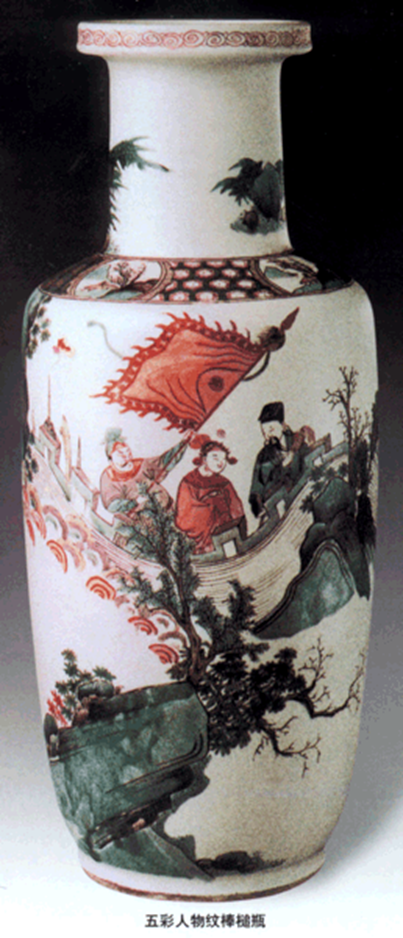
33. Chrysanthemum petal vase
one of the vase styles, with a slender mouth, long neck, sloping shoulders, narrowed abdomen, circled feet, and a week of relief embossed chrysanthemum petals on the lower abdomen. It is one of the unique shapes of the Kangxi Dynasty in the Qing Dynasty.
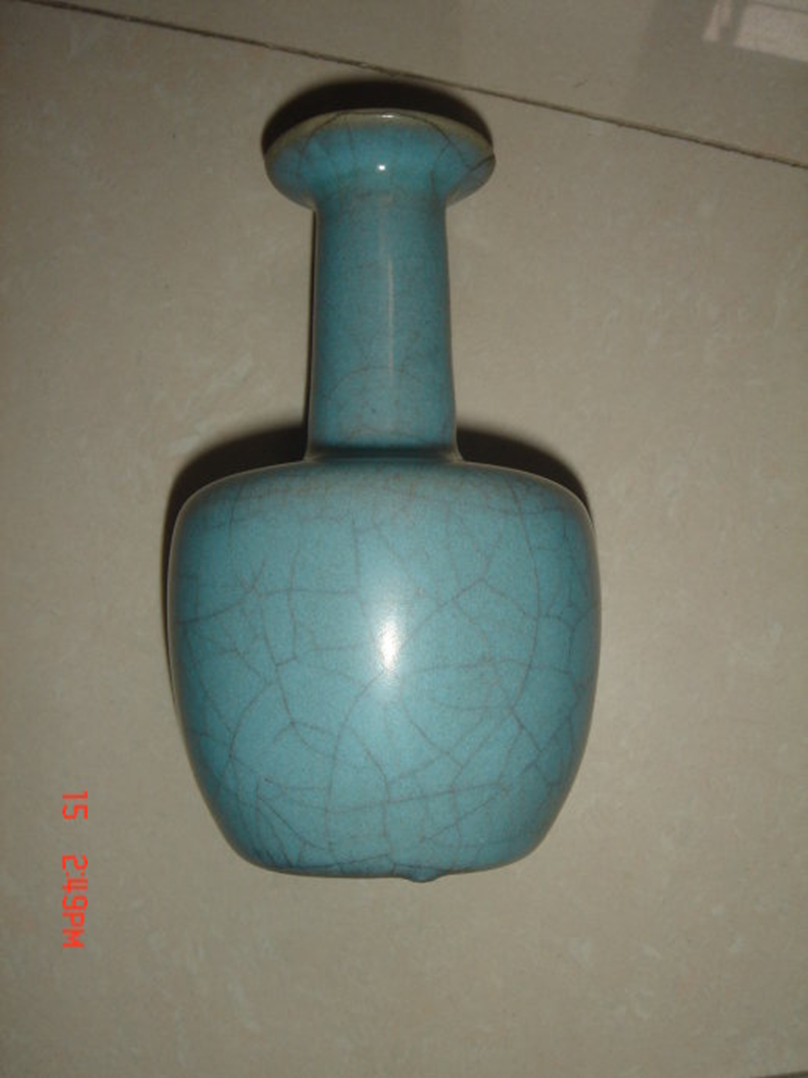
34. Willow leaf vase
A vase type, one of the unique shapes of the official kilns of Kangxi in the Qing Dynasty. The mouth is wide, the neck is thin, the abdomen is narrow and slender, and the feet are lying down. The shape of the vessel is twists and turns, elegant and graceful, resembling a hanging willow leaf or a graceful beauty, so it is also known as the "Beauty Shoulder".

35. Guanyin vase
also known as "Guanyin Zun", one of the vase styles, popular from the Kangxi to Qianlong periods of the Qing Dynasty. During the Kangxi Dynasty, there were many types of vases fired at Jingdezhen kilns. Sometimes it was difficult to distinguish between vases and statues. Generally speaking, anything with a big mouth and a big belly was called a vase. The characteristics of the Guanyin vase are its wide mouth, short neck, plump shoulders, inward curves under the shoulders, outwards below the shins, shallow circle feet, slender vase body and smooth lines.

36. Lantern vase
one of the vase styles. It is named after its shape like an oblong lantern. Popular during the Yongzheng and Qianlong periods of the Qing Dynasty, the shape is straight mouth, short neck, plump shoulders, tube belly and circle feet.

37. Tibetan grass vase
Also known as the nectar vase, it is one of the vase types. The Qing court made special vessels for Tibetan monks to plant grass for Buddha, so it was called the Tibetan grass vase. It had been fired during the Yongzheng period. During the Qianlong period, the products had round lips, straight necks with convex string patterns, plump shoulders, gradually tapered lower abdomen, shins, and feet turned out. This type of vase has no inscription and is generally recognized as a Qianlong product.
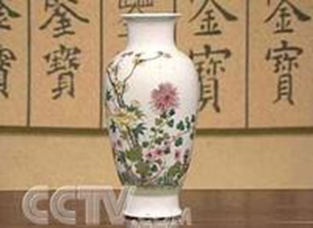
38. Appreciation of vases
One of the vase styles, it was a new creation in the Yongzheng Dynasty of the Qing Dynasty. It lasted until the Xuantong Dynasty in the late Qing Dynasty and became the traditional shape of official kilns. The vase has a curved mouth, a long neck, a round belly, and a circle foot. It is mostly decorated with blue and white lotus branches. It is homophonic for the word "incorruptible" and is specially used by the emperor to reward his ministers, with the intention of making them "incorruptible in government". After Tongzhi, pastel and single-color glaze with gold and other varieties were added, and the name was changed to "Yutang Chun vase".

39. Jiaotai vase
a popular vase style in the Qing Dynasty. The middle section of the belly of the vessel is carved into the shape of a Ruyi head, with a hook pattern or an inverted or straight "T" shape. The upper and lower parts of the vase are hooked and connected between the patterns. They can be moved but cannot be separated, which means "heaven and earth are in harmony". It was specially made for Emperor Qianlong of the Qing Dynasty by Tang Ying, the pottery supervisor of the imperial kiln factory, and Mr. Lao Ge, who was responsible for the pottery work. A great tool for enjoying.

40. Turn-center vase
One of the vase types, popular during the Qianlong period of the Qing Dynasty. The shape of the utensils is divided into large and small. The vase body is composed of an inner vase, an outer vase, and a base that are fired separately. The upper part of the inner vase is an exposed vase mouth, the vase body is like a cylinder, with decorative paintings on it, and there is a concave bowl at the bottom of the vase. Generally, the outer vase is hollow and shaped like a lantern. After the inner and outer vases are assembled, they are placed on a vase holder. The vertical shaft on the base is embedded in the shaft bowl. When you hold the vase mouth and turn it, the inner vase can rotate accordingly. The pattern on the vase is like a revolving lantern and can be seen through the hollows on the outer vase. During the late Qing Dynasty and the Republic of China, there were products imitating the Qianlong period of the Qing Dynasty.

41. Double vase
One of the vase types, popular in the Qing Dynasty, named after two vases connected into one. Usually the abdomens of the two vases are stuck together or connected from mouth to bottom. Among the imitations appearing on the market, there are those with the regular script inscription "Made in the Wanli Year of the Ming Dynasty".

In fact, there are more than thousands of types of vases in Chinese porcelain throughout the ages, and each type of vase also has many variations. Generally speaking, the early forms of porcelain vases were a little weird, which was related to the living habits at that time. In the later period, especially in the third generation of the Qing Dynasty, the shapes of the vases were very many and relatively regular. This was because of the introduction of geometric aesthetics in modern science, so the proportions were relatively small. It is well-proportioned, but sometimes it makes people feel less innovative and a bit rigid, without the unbridled creations of the ancients.
RECENT POSTS
- The Benefits of Wholesale High-Quality Ceramic Products for Retailers
2025-12-17
- Can You Make an Ashtray with Air Dry Clay? Pros, Cons, and Safer Alternatives
2025-12-17
- The Impact of Ceramic Materials in Energy-Efficient Buildings: Benefits and Applications
2025-12-04
- Top 7 Ceramic Cookware Health Benefits: Why It’s a Safer Choice for Your Kitchen
2025-12-04
- How to Clean Ceramic Planters and Improve Their Lifespan?
2025-11-17
- 15 Best Ceramic Holiday Gift Ideas for 2025: Thoughtful, Elegant & Heartfelt
2025-11-17
- Stoneware vs Porcelain vs Earthenware: Quick Decision Guide
2025-10-09
- Are Ceramic Glazes Food Safe? The Truth Behind the Shine
2025-10-09










